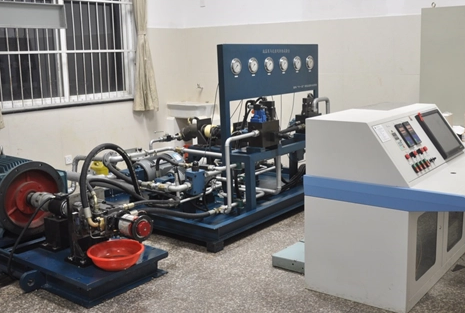Hydraulic performance testing and optimization of pumps
The hydraulic performance testing and optimization of the pump is a key link to ensure its efficient and stable operation. The following is a detailed description of these two aspects:
1. Hydraulic performance test of the pump
Hydraulic performance testing is an important means to evaluate the performance of the pump, mainly including two methods: static testing and dynamic testing.
Static testing: mainly detects the sealing performance and appearance quality of the pump, such as checking whether the oil seal, bearing, gear and other components are intact, whether there are oil leakage, oil seepage and other problems. In addition, the static parameters such as flow and pressure of the pump under specific conditions will be tested to evaluate its basic performance.
Dynamic testing: focuses on simulating the performance of the pump under actual working conditions. By testing the dynamic parameters such as flow, pressure, efficiency, etc. of the pump under actual load, as well as the stability and reliability of the hydraulic system, the actual working capacity of the pump is comprehensively evaluated. In dynamic testing, professional testing equipment and instruments such as flow meters, pressure gauges, vibrators, etc. will be used to ensure the accuracy and reliability of the test results.
2. Optimization of the hydraulic performance of the pump
For the problems found in the hydraulic performance test, the hydraulic performance of the pump can be optimized through the following measures:
Optimize the pump body structure: By improving the design of the pump body, such as optimizing the flow channel shape and reducing the flow resistance, the flow rate and efficiency of the pump can be improved.
Use new materials: Select high-strength, wear-resistant and corrosion-resistant new materials to manufacture key components of the pump, such as impellers and sleeves, which can extend the service life of the pump and improve its durability.
Optimize the oil circuit system: Improve the layout and design of the oil circuit, reduce unnecessary pressure loss and energy consumption, and improve the overall efficiency of the hydraulic system.
Adjust operating parameters: Adjust the operating parameters of the pump, such as speed, load, etc., according to actual needs, so that the pump operates under the best working conditions, thereby improving its performance.

In summary, the hydraulic performance test and optimization of the pump is a systematic and complex process, which requires comprehensive consideration of multiple aspects such as the design, manufacture, use and maintenance of the pump. Through scientific testing methods and effective optimization measures, the efficient and stable operation of the pump can be ensured, providing a strong guarantee for the overall performance of the hydraulic system.




